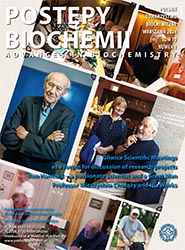From single DNA adducts measurement to DNA adductomics in molecular epidemiology of cancer
DOI:
https://doi.org/10.18388/pb.2021_509Abstract
ABSTRACT
Environmental carcinogens exert their carcinogenic effects by forming DNA adducts. This type of DNA damage can also be formed endogenously as a result of, e.g., oxidative damage. Unrepaired DNA adducts may induce mutations in critical genes, leading to the initiation of chemical carcinogenesis. Therefore, detection, identification, and quantification of DNA adducts is essential for cancer risk assessment. Over the last 50 years, the major DNA adducts formed by different classes of environmental carcinogens were characterized. With the development of techniques such as 32P-postlabeling, their measurement was implemented into molecular epidemiology. Advances in liquid chromatography-tandem mass spectrometry (LC-MS ) made the measurement of adducts more precise and allowed to gain knowledge about their identity and structures. Therefore, opened the way to DNA adductomics, the “omics” approach investigating DNA adducts comprehensively, similarly to proteomics. This review presents the historical perspective of DNA adducts research and the emerging field of adductomics.
Downloads
Downloads
Published
License
Copyright (c) 2024 Wanda Baer-Dubowska, Hanna Szaefer

This work is licensed under a Creative Commons Attribution 4.0 International License.
All journal contents are distributed under the Creative Commons Attribution-ShareAlike 4.0 International (CC BY-SA 4.0) license. Everybody may use the content following terms: Attribution — You must give appropriate credit, provide a link to the license, and indicate if changes were made, ShareAlike — If you remix, transform, or build upon the material, you must distribute your contributions under the same license as the original. There are no additional restrictions — You may not apply legal terms or technological measures that legally restrict others from doing anything the license permits.
Copyright for all published papers © stays with the authors.
Copyright for the journal: © Polish Biochemical Society.




